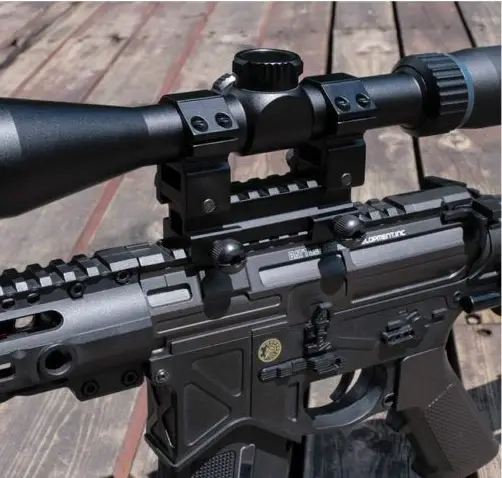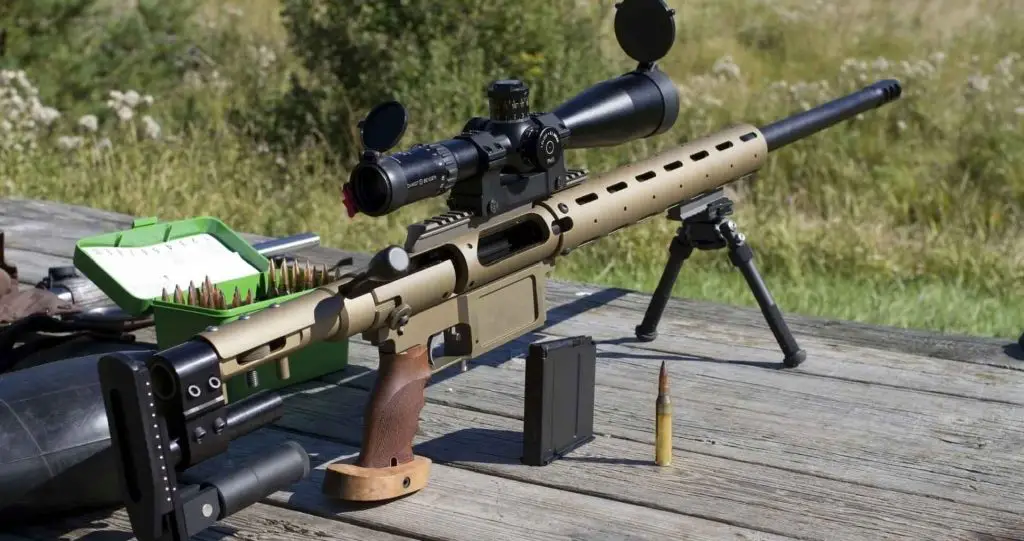
The 5 Rifle Types You Need to Know
The rifles of today continue to improve and impress with their design and engineering prowess, but at their core, they all belong to a small group.
Every rifle can be categorized into a specific type and it has to do with the action and how it affects it.
What are the different rifle types?
There are five main categories of rifles including the level-action, bolt-action, semi-automatic, pump-action, and break-action.
The action function of the rifle determines what group it will be in, and within each of these, there are further features that might be more suitable than others.
If you’ve always wanted to know more about rifles and which one is best for hunting or perfecting your precision shooting, the best place to start is learning about the rifle types.
This guide can differentiate between them and show you their best and worst points, so you’ll know exactly which firearm you need.
How Action Affects a Rifle
The easiest place to start when categorizing rifles is looking at the type of action they’re made with. The type of action that a gun has will determine its label and also how it works overall, so it’s a crucial component to understand.
The action part of a gun is where you’ll find most of its moving parts, and it’s responsible for everything to do with the ammunition, including loading it and firing it.
Many smaller components make up the action, including the trigger, hammer, receiver, safety, bolt, and more, but depending on the type of gun it is, these can vary.
The 5 Common Rifle Types
There are thousands of rifles out there to choose from, new and old, but despite what they look like, you can generally categorize them into five distinct groups depending on how they work.
These are the five most common types of rifles, their pros and cons, and where you can put them to work best.
#1: Semi-Automatic
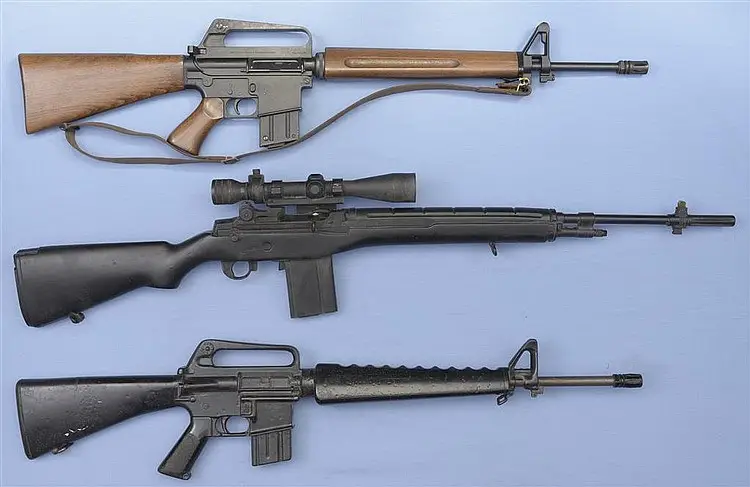
A semi-automatic rifle works similarly to a bolt action rifle, with the key difference being how it uses the energy from each shot.
This model repurposes that energy so you do less work, and rather than pumping or pulling the lever, it does it for you. however, you’ll still need to squeeze the trigger to take each shot.
There is a huge variance in the models of semi-automatic rifles and they include mechanisms like gas impingement or a piston-driven system, each having different outcomes for how the gun is fired.
The average magazine capacity ranges from five to 30 so they’re suitable for all settings and uses.
The Pros
- There is a huge range of designs, shapes, and sizes in the semiautomatic rifle category, so it’s up to the user to specify exactly what they want.
- Due to the semi-automatic nature of these rifles, it’s less effort for the user, which means a fast and efficient shooting experience.
- The semi-automatic rifle has a greater rate of fire compared to others so it can be useful in a number of settings.
The Cons
- Maintenance and repairs occur more frequently with these types of rifles, and they’re more prone to malfunctions. They take a skilled shooter to know how to operate them during these tricky situations.
Best Use
There is a huge variance in types of semi-automatic rifles which means it’s one of the better multipurpose guns.
Because you can have a smaller five-round hunting gun or a larger capacity 30 round rifle for shooting at the range, there’s no limit to how you can use one.
#2 Lever-Action
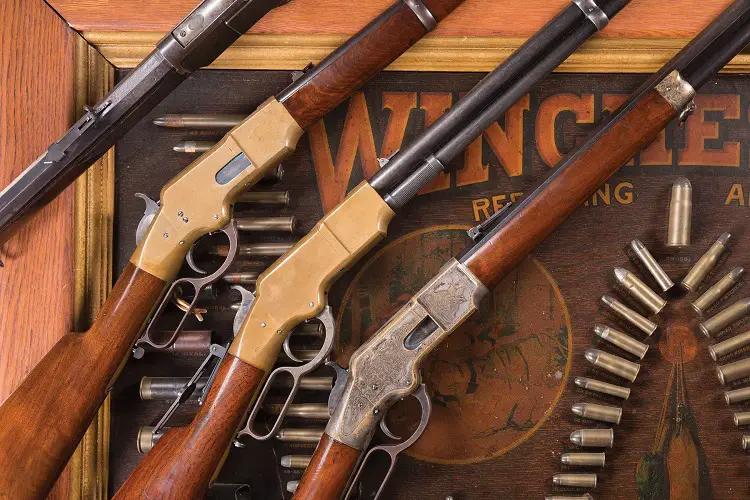
This is one of the first types of rifles ever made, and its design is still being used today.
What sets it apart from others is its construction is that it has a handle located behind the trigger, and then a tube alongside the barrel where the cartridge comes out of and gets loaded into the chamber, ready for action.
These rifles are more commonly seen in old westerns and in history books but they have advantages that make them popular in modern times as well, like their unique and traditional design.
Their cartridge capacity varies depending on the model but they’re a good choice for fast and moderate-paced shots.
The Pros
- Nothing beats the look of a lever action rifle as it takes you back to the wild west, and can give a shooting experience and hit of nostalgia like no other.
- Most lever-action rifles have a high cartridge capacity and they can be versatile in the types of magazines they take, so there’s a lot of versatility here.
The Cons
- These are considered more delicate than other rifles so if you plan on giving it a beating, choosing something more durable is best.
Best Use
The lever-action rifle isn’t intended to be a multipurpose gun, and its best use would be for something like everyday use on the farm or in certain types of hunting surroundings.
They’re reliable but can be delicate, so you might not consider them the first choice when you stack up today’s modern guns against them.
#3 Pump Action Rifle
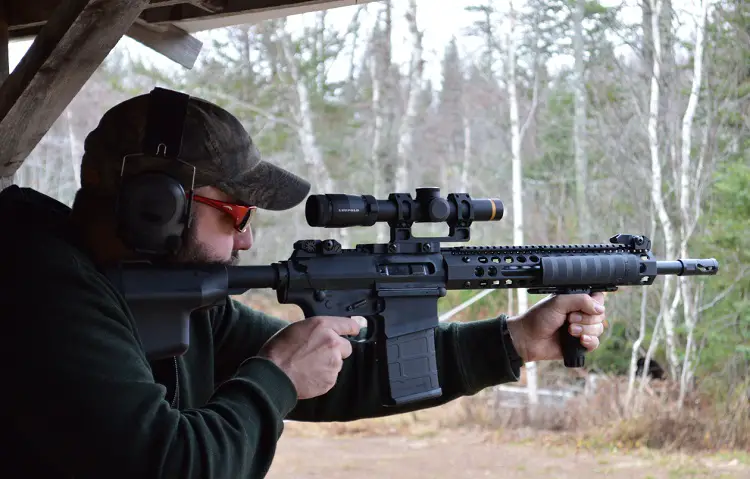
A pump-action rifle might not be as popular as its shotgun counterpart but they operate in much the same way.
The forestock of the gun slides down back and forth, ejecting the used casings once they’re done. When it comes forward, it picks up a new one, puts it in the chamber, and locks it down so it’s ready for action.
Within this category of rifle, there are different magazine styles to choose from, including tubular and dropbox.
They also vary in design including classic favorites from Remington and Winchester as well as modernly engineered entries.
The Pros
- A pump-action rifle can be operated with your supporting hand so your trigger hand is free, which means better accuracy with each shot.
- These firearms are known for their higher fire rate and are one of the faster options out there if you want to stick to rifles.
The Cons
- Using a tubular magazine with this type of gun will make your reload very slow, so if you want something fast action, it should be avoided.
Best Use
The pump-action rifle has long been a favorite for people who love to hunt or target practice and if this is where you use your gun, you’ll find it a winner as well.
They have a fast fire rate with the right type of magazine and are reliable, so if you’re unsure about a certain situation, having your pump action will alleviate some of this concern.
Read Also: Types of Air Rifles
#4 Bolt Action Rifle
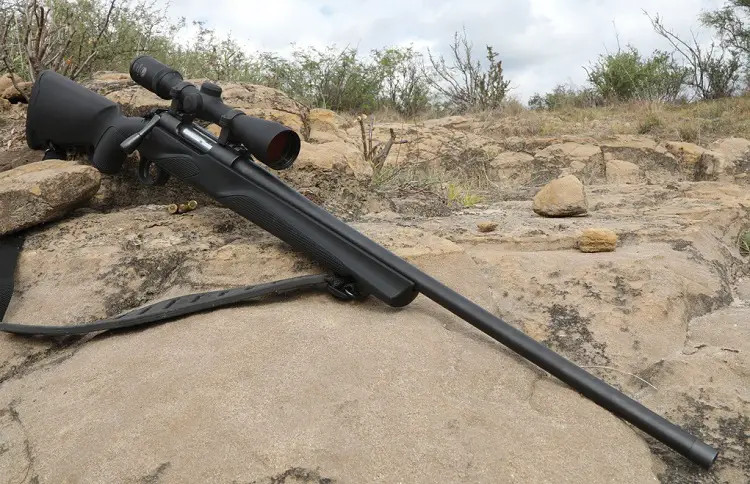
These are arguably one of the most beloved types of rifles out there, thanks to their simplicity and power.
The bolt action rifle has a shorter method of operation, so you push forward the action and it’ll pick up a new cartridge, and then pull it back after a shot and it’ll eject the old one.
A bolt action rifle usually has a magazine, but they can vary drastically by each model as to what magazine and cartridge they use.
Depending on how you plan on using it, there’s probably an exact model of bolt action that will suit, with features like straight pull for easier use or designs that are safe for traveling with.
The Pros
- These rifles are considered the most accurate of all and known for their pinpoint precision, which is helped even further with a skilled shooter operating them.
- There are safe options available in bolt action rifles that make it a good choice for new shooters, but they vary with lots of models for experts as well.
The Cons
- A bolt action is known for having an intense recoil and even the general feel of holding one when it kicks back on your shoulder can be too much for some people to overlook.
Best Use
The most common use for bolt action rifles is in hunting, as their precision makes them ideal for everything from small vermin to large deer.
You’re able to shoot anything from a good distance away and still get a pretty accurate hit, so if you want to stalk your prey, a bolt action rifle is the way to go.
#5 Break Action Rifle
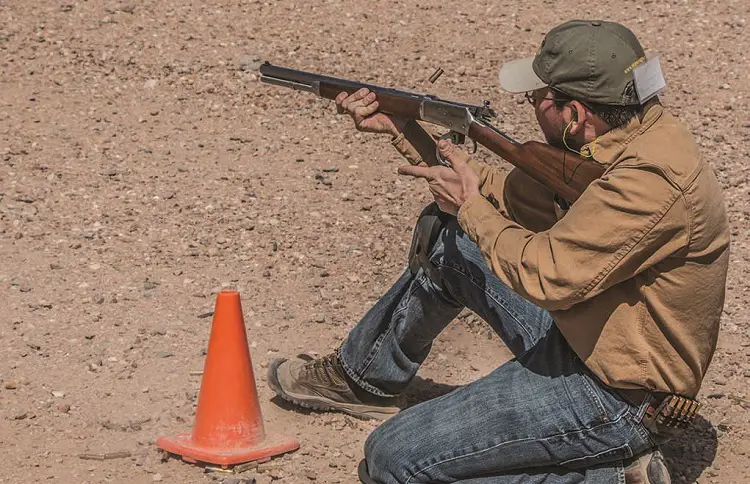
A Break action rifle is considered a simple and somewhat rare firearm option, but that doesn’t mean it’s lacking in anything.
The operation of a break action is such that the barrel rotates away from the receiver assembly with a hinge so you can put a new cartridge in or remove an old one, with the huge benefit of discharging only when you mean to.
These rifles are generally single action but they can come in other styles, including the double-barrelled break action that’s used by big-time safari hunters, and the multiple barrel combination gun, which is better suited for small-time hunters.
The Pros
- These are some of the safest types of rifles to shoot and are incredibly easy to maneuver. If you’re new to the sport or want to see what a rifle has to offer, a break action is one of the smartest options.
- The variety of chambers and styles means you can use them to take down something as powerful as an elephant, as long as you’re equipped with a powerful enough cartridge.
The Cons
- Most of these firearms only hold one round, so if you’re looking for something fast and efficient, you’ll want to avoid the time-consuming break action.
Best Use
A quality break action rifle is useful for any shooting scenario where you want to take your time and make the shot count, including target practice.
They’re ideal for hunting and can vary quite dramatically in capabilities, so you might use them to hunt tiny vermin through to intimidating beasts.
A Rifle for Every Need
Whether you like to hunt on the weekends or practice precision shooting as a hobby, a rifle is a smart way to go about it.
Not every rifle is right for every purpose though, so understanding the different types and what they mean for their use will ensure you choose a firearm that’s up for the task.
Related Questions
Rifles are a popular class of firearms, but with so many types and working mechanisms to get a grasp on, it can be confusing when you’re trying to choose correctly.
We’ve answered some commonly asked questions about rifles and their use so you’ll be better equipped to find the right one.
Can You Remove the Stock on a Rifle?
It is possible to remove the stock of a rifle and replace it with a PG when done correctly, but it depends on factors like the size as to whether it’s allowed.
As a general guide, a rifle with a barrel less than 18 inches should not have the stock removed, otherwise, it will be classed as a short barrel rifle.
What Are the Benefits Of Using A Rifle Suppressor?
With a suppressed attached to your rifle, you’ll get lots of benefits for hunting and personal use specifically.
A rifle fitted with this accessory will have reduced recoil and muzzle blast, as well as being quieter which means less noise pollution and hearing damage for the user.
How Heavy is a Rifle?
A standard rifle that’s scoped and loaded with ammunition will weigh around seven pounds on average, and anything much smaller than this may be hard to handle and have too much recoil.
The overall size and type of gun will also factor into its final weight, along with other considerations like scopes, ammunition, and accessories that have been attached to the weapon.
Resources:
![5 Best Pellet Guns Under $100 [2023] 8 bb rifle gun](https://www.armorholdings.com/wp-content/uploads/2022/11/bb-rifle-gun.jpg)
